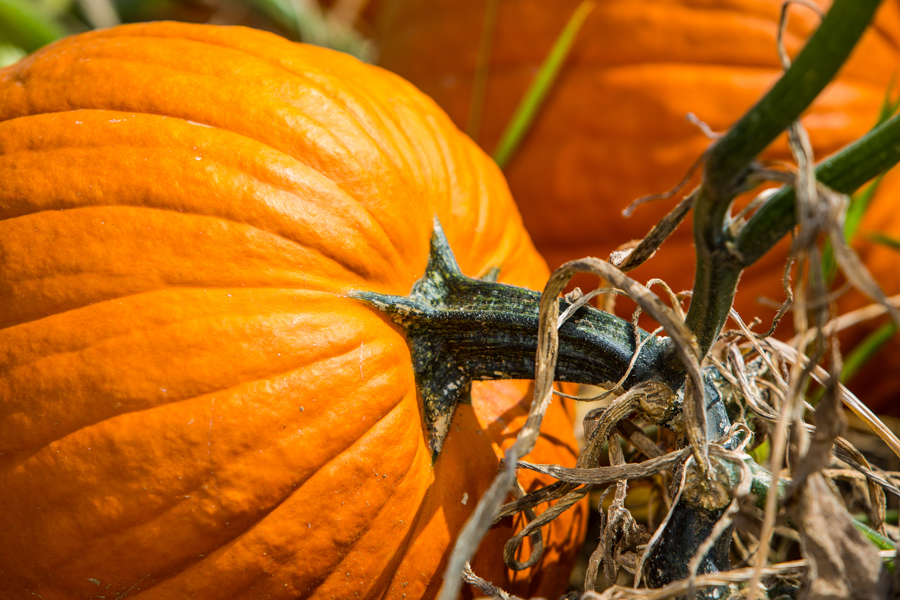Pumpkin: Late Season Growing and Harvesting Tips

Late in the growing season, gardeners can be unclear as to how to manage pumpkin fruits. Here are some growing tips to help gardeners maximize the quality of pumpkin fruits and determine when pumpkins are ready for harvest.
Late Season Growing Tips.
GardenZeus recommends removing blooms and new fruits that appear late in the growing season, and which may not reach maturity before the plant is exhausted. This will help to encourage growth and quality of existing fruits.
To improve uniform appearance of pumpkin fruits, try rotating the fruits every week or two as they grow. Pumpkin fruits are usually more richly pigmented and darker in color where exposed to sunlight. Exposing all sides of the fruits to the sun will help them to develop uniform color. Pumpkin fruits may be damaged by too much direct sunlight. An hour or two per day in the sun may be sufficient to bring the fruits to full color. Squash and pumpkin fruits are particularly subject to sunscald late in the season when plants have died back and leaves no longer shade fruits.
Pumpkins resting directly on soil may be prone to rot. Mound mulch under pumpkin fruits or elevate fruits on a dry surface such as a wooden board, especially from the time they begin to color until maturity.

Train pumpkin vines to become a living mulch in your garden. The shade provided by the leaves will help protect the soil and stimulate more biological activity.
When to harvest.
Length of growing season varies widely among varieties of pumpkin. The “days to maturity” from seed packets gives a basic guideline but is not always accurate due to variations in weather and growing conditions. Different varieties may have unique clues or signs that fruits are mature. Most varieties are ready for harvest when fruits are in full color, rinds are firm, and the nearby vines and stem to a fruit have shriveled or died. Plant leaves and stems may generally be turning brown and dying. Many varieties are ready for harvest when the rind has become so hard that it can’t be easily nicked or dented with a fingernail. Shorter-season Cucurbita pepo varieties, particularly those grown for immediate cooking, may be ready to harvest when rinds are still somewhat soft.
Be patient and wait until full maturity to harvest pumpkins. Fruits will not continue to mature or harden if harvested early, and immature fruits will not last well in storage.
Gardeners who can’t wait until their pumpkins are fully mature should consider carving pumpkins before harvest: use a sharp knife to carve a pattern into the maturing pumpkin and the pattern will become more pronounced as the pumpkin matures. And, once harvested, the carved pumpkin is ready to use a a seasonal decoration.
Don’t know your climate zone? Click here.
Other articles of interest:
Tips for Managing Fallow Garden Beds and Containers
Remove Chlorine When Watering Organic Gardens (Chlorinated Water, Part 2 of 3)